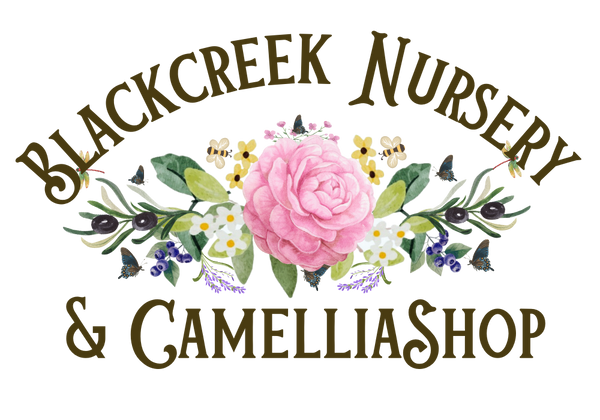
Every day, millions of people have their morning cup of tea. But did you know that his popular beverage is made from the leaves of a Camellia?
Camellia sinesnsis is one of over 250 known species of the genus camellia. Camellias are evergreen shrubs that flower in the USA during the fall and winter months for the most part. They are native to China, Japan and Southeast Asia but have found their way to all parts of the world where they have been thriving and blooming for centuries.
There are many types, or species of camellia. Camellia japonica and Camellia sasanqua are the most popular of the blooming camellia species and are famous for their bountiful fall and winter blooms that adorn our gardens in milder climates.Camellia sinensis,often called The Tea Plant, is the oldest known camellia species but is the only one that is widely grown for tea for one special reason.

Pictured above: Camellia japonica - NOT used for tea! Just for beauty
Cultivars of Camellia sinensis contain caffeine, while the others do not. Caffeine is a naturally occurring compound that is found in a wide variety of plants, including the coffee plant and the Cacao plant. It is a desirable stimulant that wards off sleep and restores alertness and refreshment. Because of this,Camellia sinensis has been used for centuries as a calming, refreshing beverage. Legend has it that thousands of years ago, a Chinese monk , tired and weary from his long day at work, decided to make a pot of soup. As the water boiled, some leaves from the Camellia tree above fell into his pot and he tasted the brew and was instantly refreshed. Thus, the legend of Tea was born!
Camellia sinensis is not just one plant. It has many thousand cultivars or varieties. Each of these varieties bear similar characteristics with one another. As with other camellia species, there are many characteristics within the sinensis species that differ from one another. You will find large and small foliage sizes and textures. Also growth rates and habits can vary from upright growing varieties with large leaves to small compact dwarf-like plants with very small leaves. Like all camellia species, Camellia sinesnsis cultivars have flowers, usually very small and range from pure white to a blush pink with large yellow stamens. They normally bloom anywhere from late summer to early fall.
Although Camellia sinesnsis is predominantly grown for tea, it is not limited to that. The sheer density, evergreen leaves and blooming characteristics of Camellia sinensis cultivars are quite attractive for any garden, patio or container plant. The larger growing varieties would be well suited for a hedge or screen. Most cultivars are hardy to around 20ºF . Imagine a plant that can take the place of a Viburnum or Ligustrum that is also perfect for edible
The blossoms are not used in the tea production and are rarely allowed to flower if used primarily for tea production. On their own, the plants are quite attractive in the landscape when they are in full bloom as sustainable suburban and city landscapes!

There is also a movement to promote tea as a viable agricultural crop in the southern warmer climates. In the future you may see more widespread agricultural use as we begin to depend more and more on products we can produce here in the USA.many white to pink flowers bloom in clusters up and down the stems. They produce viable leaves for tea harvesting during the active growing season. In zone 8 that can be from April-September. Other climate zones may be longer or shorter depending on the weather.

